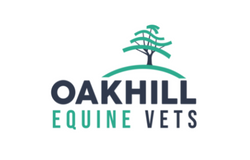Choke
Choke in your horse can be a scary thing, but unlike “choke” in humans It is not a blockage of the trachea (windpipe). In horses it is a relatively common problem where the oesophagus (also known as the gullet – the tube which food passes down from the mouth to the stomach) becomes blocked.
Choke
Choke is a relatively common condition seen in horses and ponies and is typically caused by obstruction of the oesophagus (food pipe) with food.
It is important to note that this is not the same as the life-threatening condition in humans, where the term “choke” refers to blockage of the windpipe rather than the oesophagus. This difference means that unlike humans, horses with choke can still breathe.
Fortunately many cases of choke resolve quickly and spontaneously and only cases in which the obstruction lasts for longer than 30 minutes are likely to require veterinary assistance. While waiting for your vet to arrive to arrive, stay calm, stay safe, reassure your horse/pony and withhold feed.
DIAGNOSIS
Clinical signs of choke include:
- difficulty/repeated attempts at swallowing
- stretching/arching of the neck
- coughing
- food & saliva discharging from the nose
- drooling
- disinterest in food
- occasionally a lump may be seen or felt on the left side of the neck
The diagnosis is usually suspected on the basis of the clinical signs and can be confirmed by passing a stomach tube up one nostril and into the oesophagus itself. Failure of the tube to reach the stomach indicates an obstruction.
Due to the sensitive nature of the nasal cavity it is not uncommon to cause a nosebleed; although this may look dramatic it is rarely, if ever, a serious complication.
VETERINARY TREATMENT
Following an initial examination, horses with choke are often sedated, to reduce anxiety, relax the oesophagus and to lower the head, reducing the risk of the horse inhaling food and saliva.
Attempts may be made to flush away the obstructed food material by gentle warm water lavage through the tube. It is important to keep the horse’s head low during this procedure to prevent water and food going down the windpipe.
The vast majority of choke cases requiring veterinary attention respond to this treatment which can be performed easily on the yard. However, occasionally may require further investigation at our clinic.
The most common complication following an episode of choke is aspiration pneumonia which occurs when food and saliva are inhaled. A preventative course of broad-spectrum antibiotics may be prescribed to reduce the risk.
Serious or long standing obstructions can cause scarring of the oesophagus which reduces its diameter and increases the chances of the horse choking again. Anti-inflammatories may be prescribed to help control this problem.
PREVENTION
Horses and ponies with dental problems (that prevent them grinding their food properly), individuals that bolt their food too quickly and those fed dry pelleted or cubed feeds are all at increased risk.
- Ensure sugar beet is well soaked and moisten pelleted feed.
- Add chaff to the feed to slow the feeding rate and encourage chewing and saliva production.
- Ensure all horses receive a thorough dental examination every six to twelve months.
- Following an episode of choke feed softened or soaked feeds and forage for several days to give any damage to the oesophagus chance to heal.
